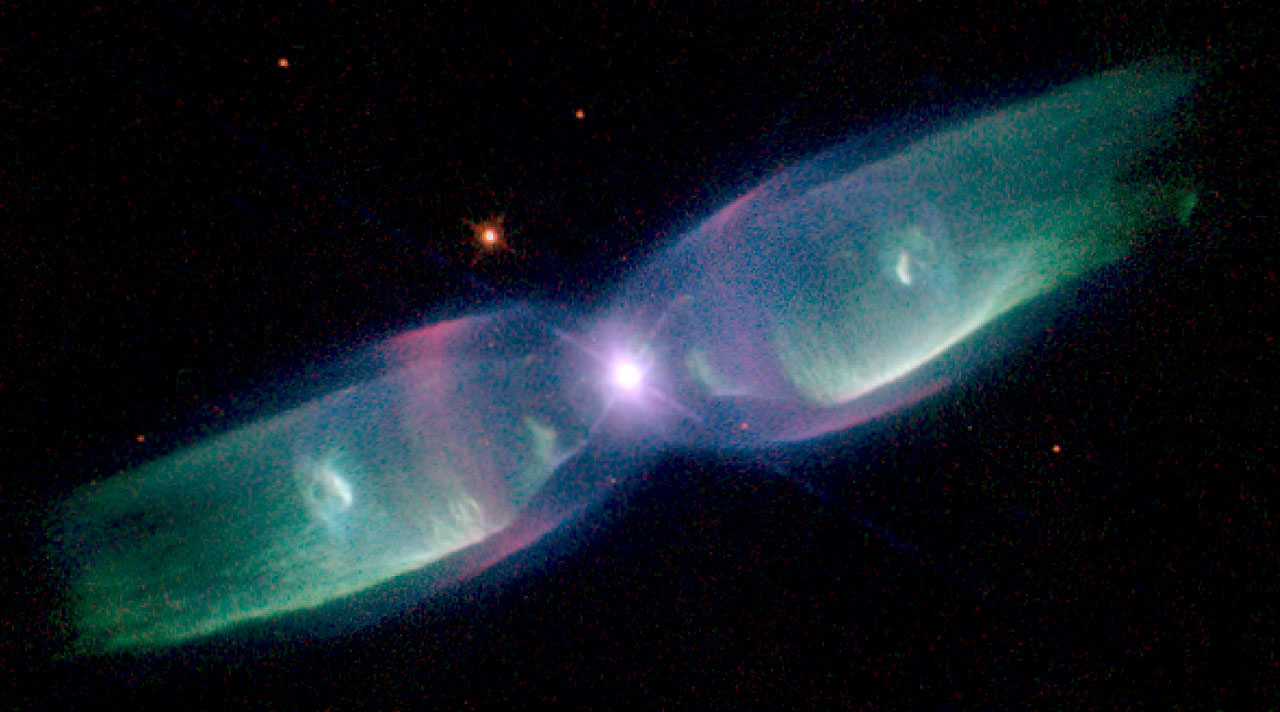There is no big one.
|
Yet, even in the small picture, it IS amazing! :-)
For some reason, the “Rocky” movie theme comes to mind…
If you have Firefox, you can right click and click “view image.”
It is larger than the image in the first post. Then you can press
“ctrl-” and forward your mouse wheel, and voilá! The Big One!
In any case, this is quite a spectacular image, and I wonder if we
see these images so that we might know what will happen to our
own solar system one day, obviously too far in the future for us
to see.
Thank you for the post and ping, Mr. Civilizations.
Is this big enough?
The Ant Nebula is going right into my wallpaper folder. I love these images of stellar explosions with the distinct lobes: it's like somewhere in the distant past, it was blasted in two by a Praxis shockwave.
Trying to explain something they have no clue about is humorous. This object stays cohesive and symmetrical over more than light year and the "hot gases" ignore Boyle's laws, much to every physicist's consternation as they try to explain how this can be using gravity and an invisible postulated star orbiting close to the visible central sun. Such a star orbiting there doesn't explain the filamentary structures streaming further out into space from the bi-globular structures on either side of the center. They recognize the magnetic field, but they fail to recognize that magnetic fields are created by the flow of electricity.
This is actually a Z-Pinch plasma phenomenon in a Birkeland current flow, reproducible in a plasma laboratory with plasmids on either side of the pinch. The "hot gases" are by definition, charged ions, atoms stripped of their electrons. These are surprisingly common in the Galaxy. Some are even more obviously Z-pinch plasmas than the Ant Nebula. For example, the Butterfly Nebula:

Or M2-9. which is probably the best example found so far:

This one has very distinct plasmoid cores with high temperature cores. Much of it is glow discharge mode similar to what occurs in a neon gas sign while the pinch itself is in arc discharge mode, the plasma moves into dark mode the farther it gets from the pinch. The signatures are exactly what is seen in the laboratory Z-pinch Birkeland current double layer plasmas. In this one you can even see the twists in the filamentary structure.

"The "hourglass" discharge configuration, which may have nested hourglasses as viewed here, is forcing a reconsideration of the physics of nebular formation. According to Raghavendra Sahai, an astronomer at JPL in Pasadena, California, "What we thought we understood of planetary nebulae we no longer do. Something different and dramatic is going on." As to the dramatic shape and structure, especially the nested hourglass; this should all be a deal-killer for explosion-type theories, Sahai states, "It is very hard to see how you get it." But the embedding of similar configurations is not a surprise to experts on plasma discharge.
Yet gravity cosmologists refuse to see what is right in front of their eyes, choose to ignore a force that is 1039 times stronger than gravity and equally infinite in reach as gravity, in preference for the far weaker power as the driving force of the Universe. The Electric Universe Cosmologists are not so dismissive.
More information can be learned about Plasma and the Electric Universe here: